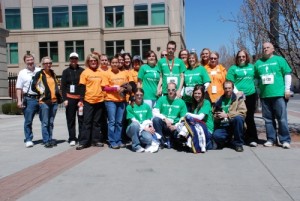How to do Reference Checks on Volunteers
Friday, July 12th, 2013 There is no question that a consistent practice of screening volunteers can make your organization, clients and the public safer. Gathering and checking references from volunteer applicants should be part of the screening process.
There is no question that a consistent practice of screening volunteers can make your organization, clients and the public safer. Gathering and checking references from volunteer applicants should be part of the screening process.
References can confirm or deny whether the applicant will be a good fit for your organization. It’s much better to find out before they start their volunteer duties!
Here are several tips for doing volunteer reference checks:
- Ask applicants for references who are familiar with their work—employers, previous volunteer managers, etc.
- Remember that applicants often think their references won’t be contacted. So don’t assume that they will only provide positive references.
- Call or email each and every reference.
- Ask each reference the same set of questions. Don’t neglect to ask any of your questions. You may hear a glowing report on the applicant, until you ask certain questions that trigger concern. Plus, you’ll get a much better picture of the applicant by asking the same things of each reference.
- Don’t ask leading questions, or “yes” or “no” questions. For example, “Don’t you think Mary would be a great driver for our organization?” Give references the time and space to answer in their own words.
- Clearly describe the position for which the person is applying and ask whether he or she can successfully handle the tasks.
- In terms of vulnerability, clearly describe the people the applicant will be serving and ask whether the reference would be comfortable with it.
Consistency and clear communications are very important when doing volunteer reference checks. Make them a standard part of your volunteer screening process, and you’ll have higher quality volunteers who better fit with your organization!








 Nonprofit volunteer managers are sometimes inundated with offers from corporations—especially around volunteer “holidays” like The National Day of Service and Martin Luther King, Jr. Day. While no NPOs we know would turn down volunteers who are willing and qualified to help, sometimes too much of a good thing can make for headaches.
Nonprofit volunteer managers are sometimes inundated with offers from corporations—especially around volunteer “holidays” like The National Day of Service and Martin Luther King, Jr. Day. While no NPOs we know would turn down volunteers who are willing and qualified to help, sometimes too much of a good thing can make for headaches.